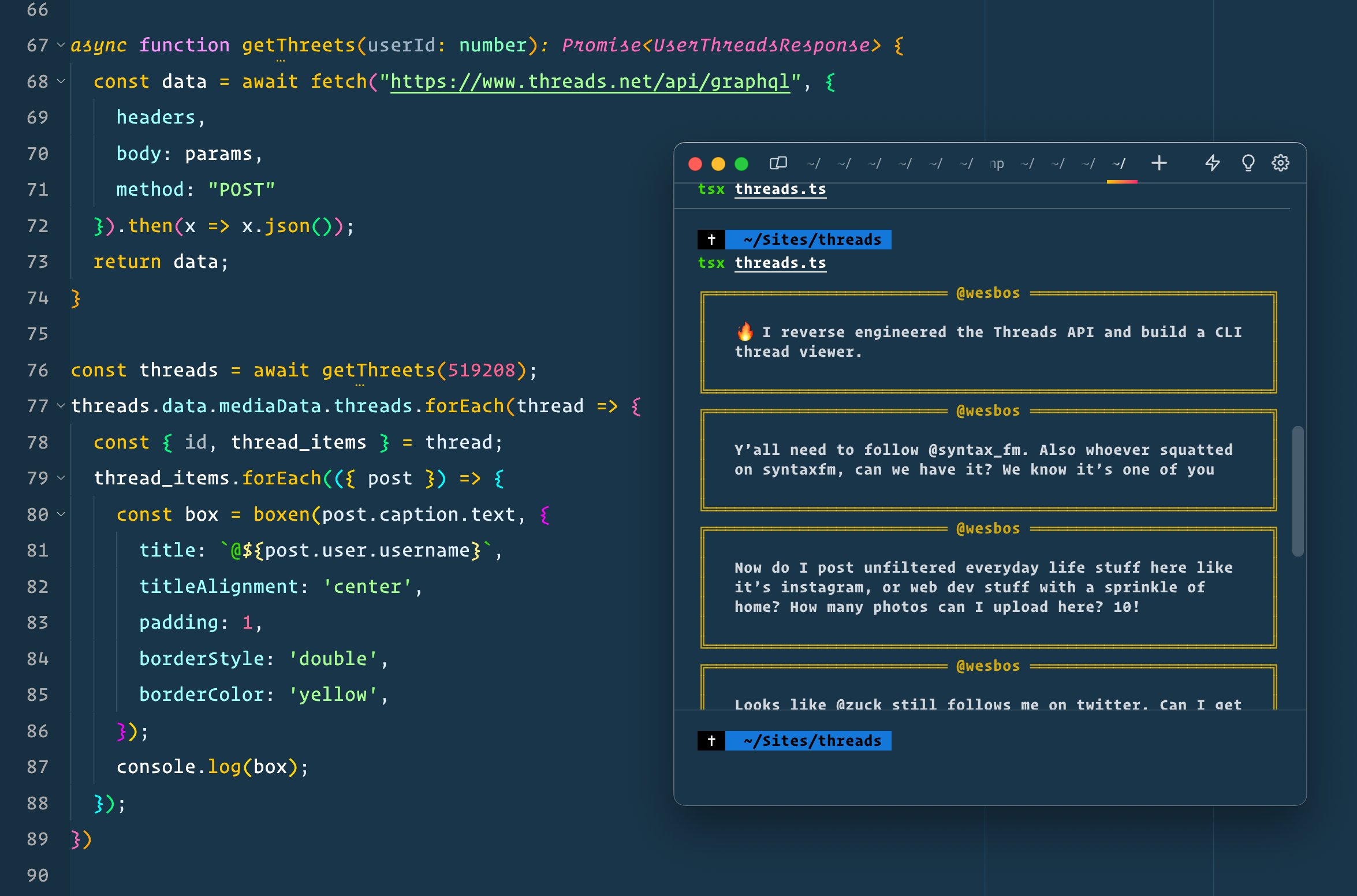```js import { ThreadsAPI } from 'threads-api';
// or in Deno 🦖: // import { ThreadsAPI } from "npm:threads-api";
const main = async () => { const threadsAPI = new ThreadsAPI();
const username = '_junhoyeo'; const id = await threadsAPI.getUserIDfromUsername(username); console.log(id);
if (!id) { return; }
const user = await threadsAPI.getUserProfile(username, id); console.log(JSON.stringify(user));
const posts = await threadsAPI.getUserProfileThreads(username, id); console.log(JSON.stringify(posts));
const replies await threadsAPI.getUserProfileReplies(username, id); console.log(JSON.stringify(replies)); }; main(); ```
